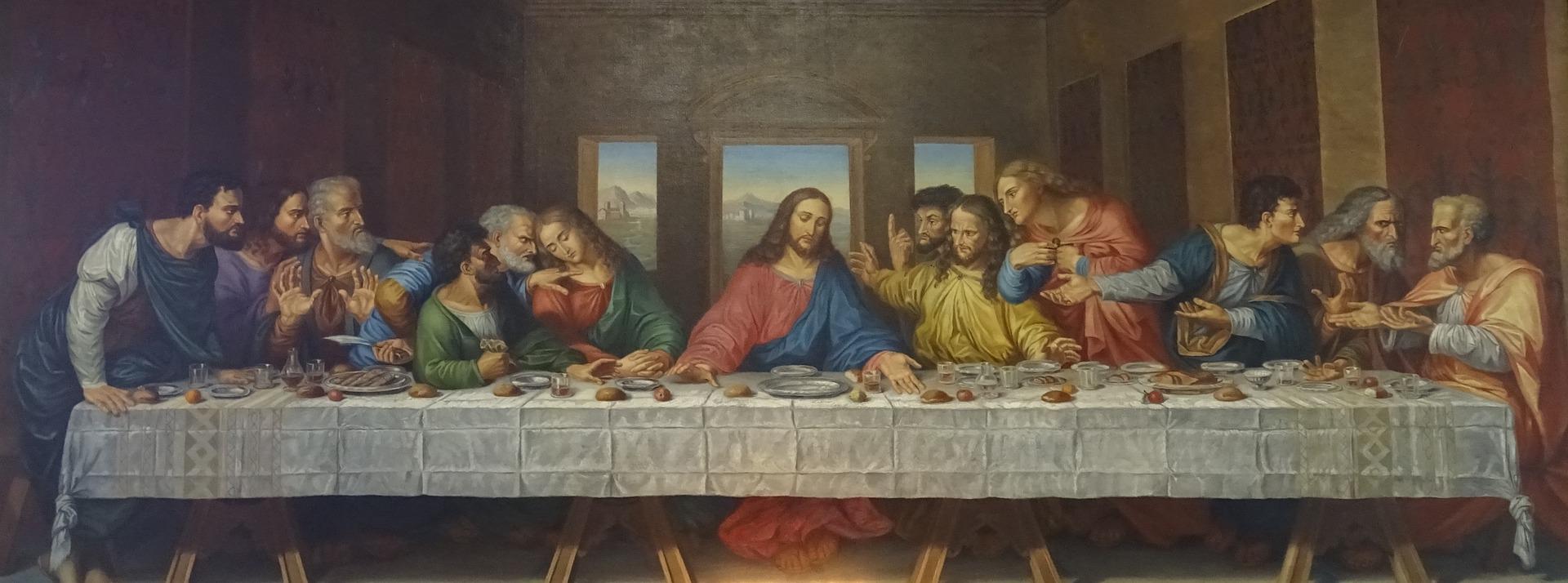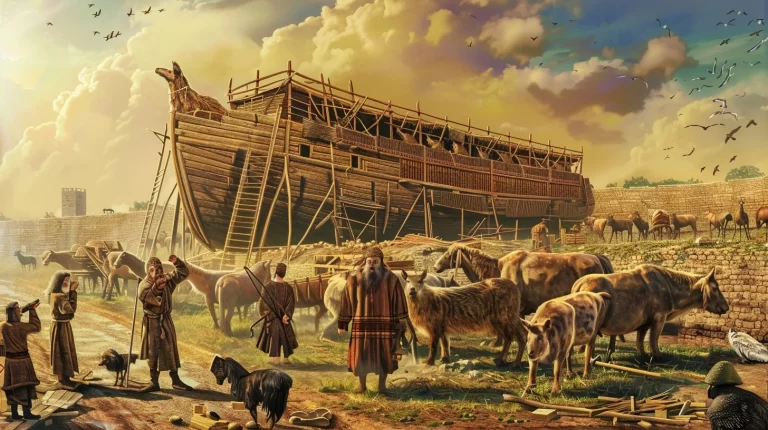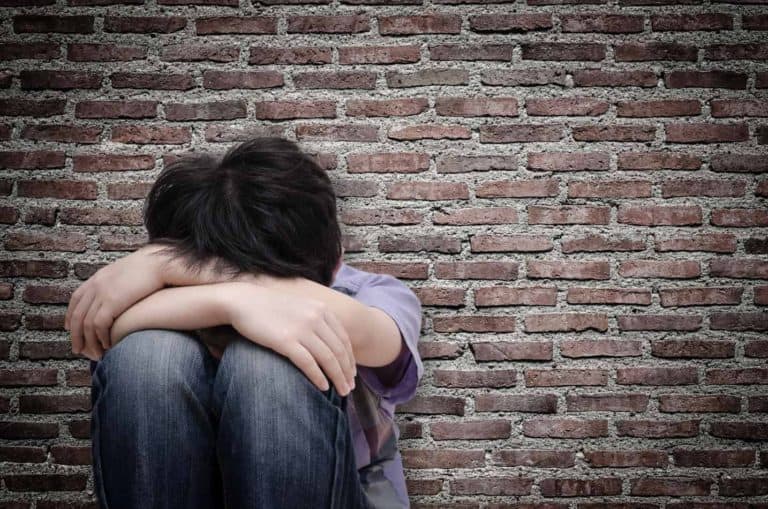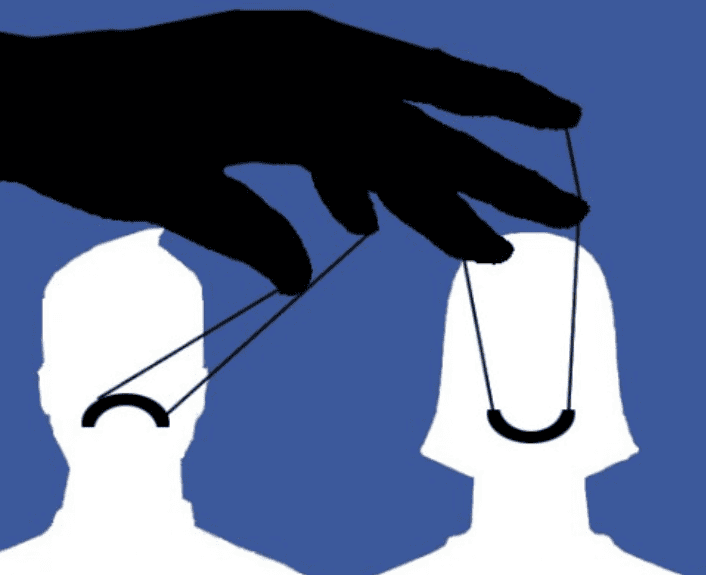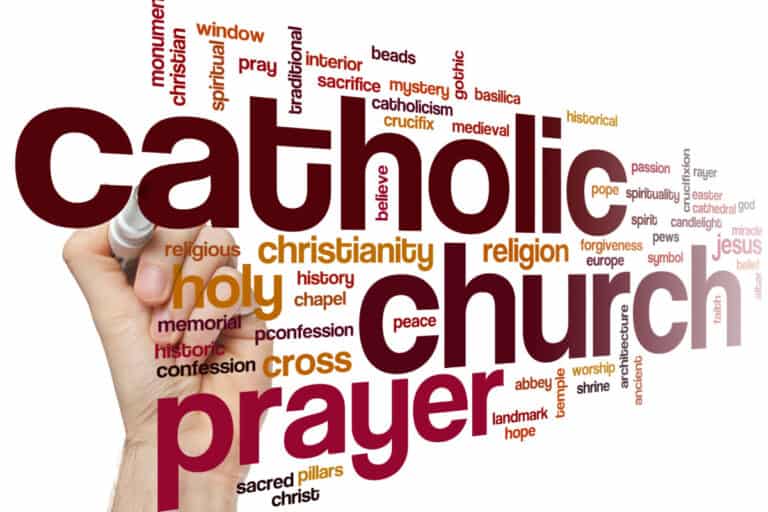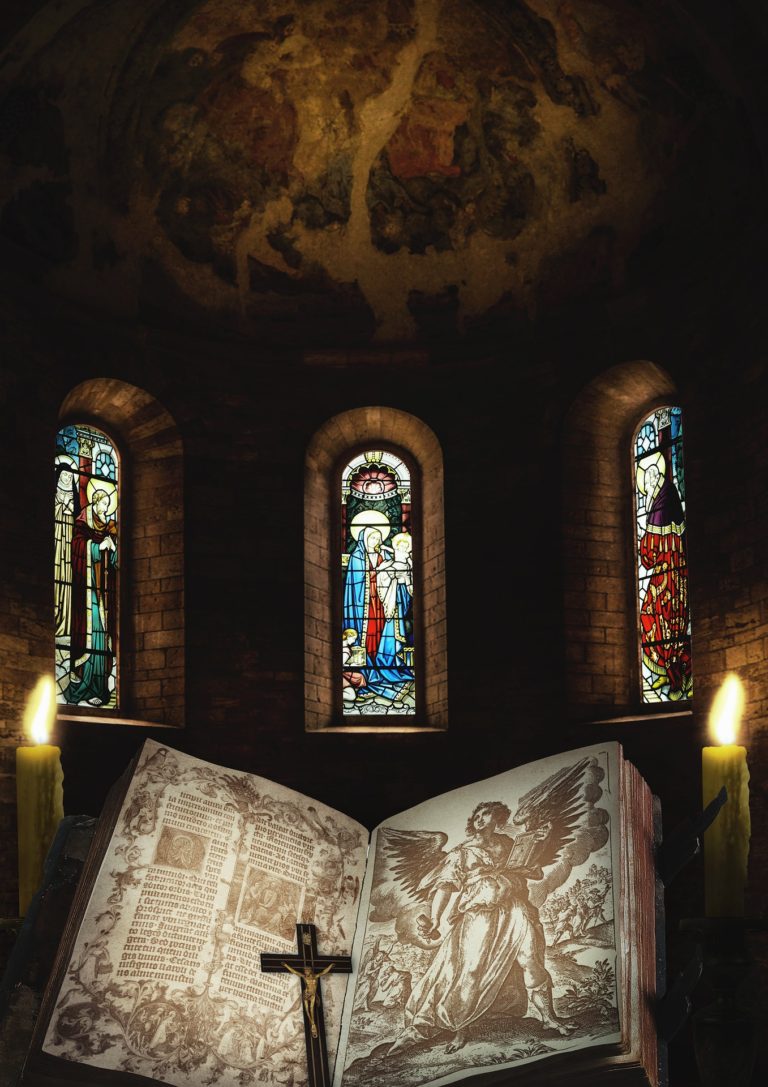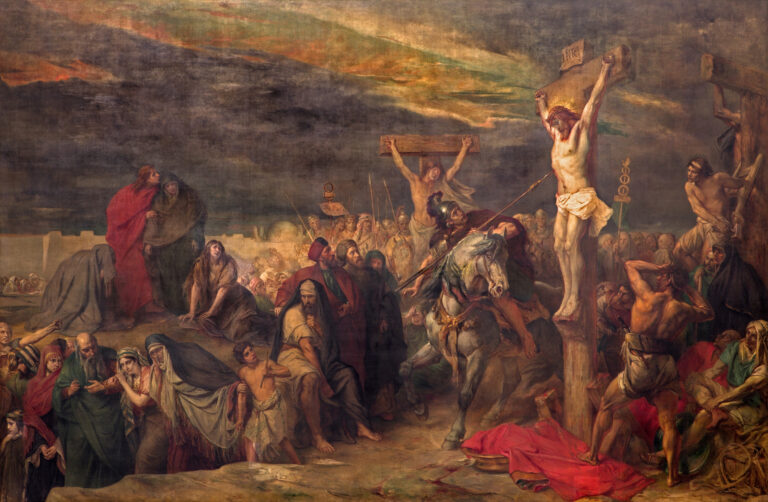What is the History of the Vigil Mass?
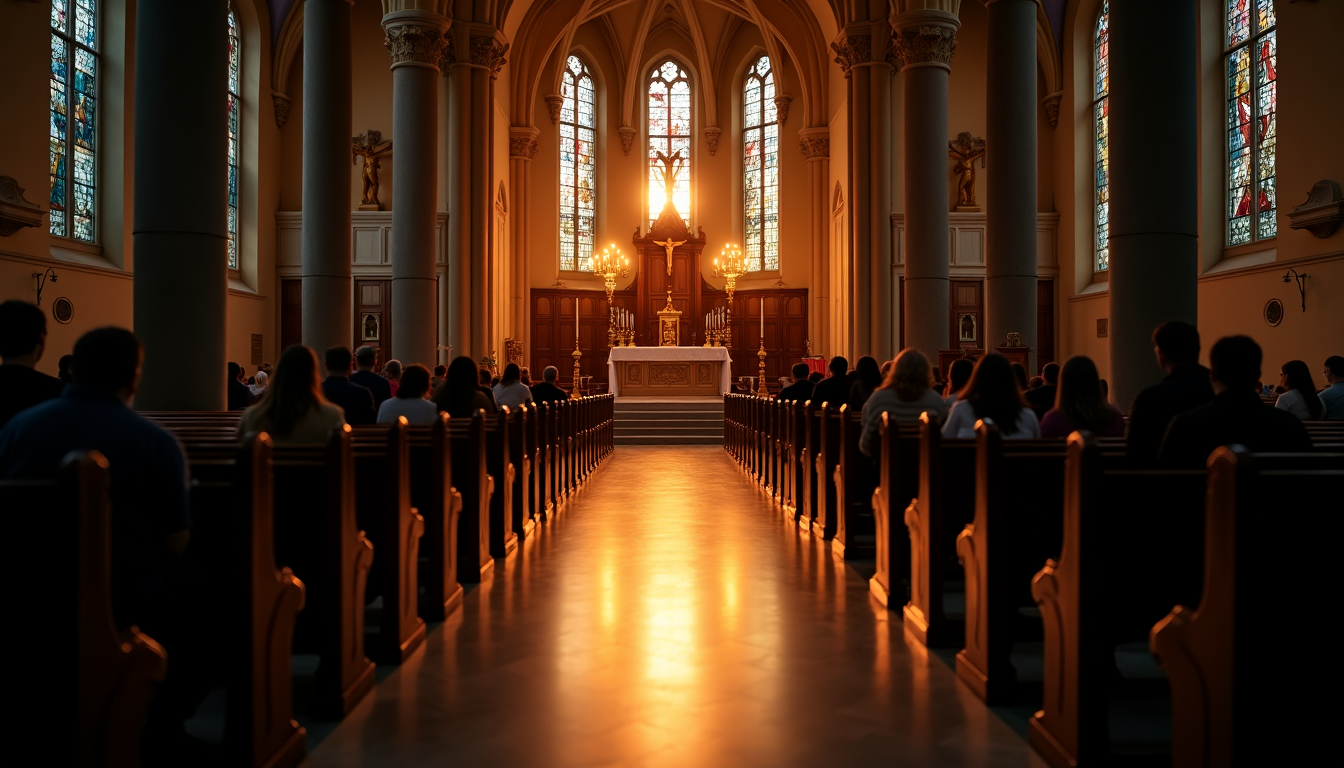
The term “Mass” has formed a cornerstone of Catholic worship since 397 AD, when St. Ambrose first employed it to describe the Eucharistic service. What many Catholics might not realize, however, is that the Saturday vigil Mass as we understand it today emerged much later through a significant liturgical development in 1967.
While Sunday worship has remained essential to Christian faith since the first century, the Saturday vigil Mass option represents a relatively recent adaptation. The Church formally introduced this practice through the document Eucharisticum Mysterium in 1967, with the express purpose of helping the faithful celebrate the resurrection of Our Lord more conveniently in modern times.
What is the journey that led to this practice?
In exploring the development of the Saturday vigil Mass tradition, we must examine both its ancient theological roots and its modern pastoral application. Through understanding this development, we gain insight into how the Church maintains her timeless truths.
Throughout this exploration, we will uncover the historical significance of Sunday observance, the theological foundations of vigil celebrations, and how this practice continues to shape Catholic spiritual life today.
What are the Early Christian Roots of Sunday Worship?
“”Jesus taught a new sacrifice which the Church received from the Apostles and offers throughout the whole world.”” — St. Irenaeus, Bishop of Lyon, early Church Father, influential theologian
“”Jesus taught a new sacrifice which the Church received from the Apostles and offers throughout the whole world.”” — St. Irenaeus, Bishop of Lyon, early Church Father, influential theologian
The first Christian gatherings emerged organically from Jewish worship traditions yet developed distinctive characteristics that would eventually establish the foundation for our modern practices, including the Saturday vigil Mass. This period of transition represents one of the most fascinating chapters in our religious history.
When the early Christians gather for their worship
As we read in the Scriptures, the earliest documentary evidence of Sunday Christian worship appears in several New Testament references. In Acts 20:7, Luke records that believers gathered “on the first day of the week… to break bread,” a phrase that clearly refers to the celebration of the Lord’s Supper [18]. Additionally, St. Paul instructed the Corinthian church to set aside offerings “on the first day of every week” (1 Corinthians 16:2), indicating this day already held special significance for community gatherings.
The selection of Sunday for Christian worship carried profound theological meaning. Unlike the Jewish Sabbath that commemorated creation, Christian Sunday observance celebrated the resurrection. The Gospel accounts unanimously confirm Jesus rose on “the first day of the week” [19], establishing a powerful basis for this day’s prominence. Furthermore, Our Lord appeared to His disciples repeatedly on this day—to Mary Magdalene, to travelers on the Emmaus road, and to the gathered disciples [19].
Throughout the Scriptures and early Church writings, this day eventually became known as “the Lord’s Day” (Revelation 1:10). By the mid-2nd century, multiple early Christian documents clearly identified Sunday as the Lord’s Day [19]. Justin Martyr, writing around 155 AD, explicitly stated: “Sunday is the day on which we all hold our common assembly… because Jesus Christ our Savior on the same day rose from the dead” [20].
For early Jewish Christians, this transition didn’t happen overnight. Many initially observed both days—Sabbath rest and Sunday worship. The first gatherings often occurred Saturday evening, which under Jewish reckoning (sunset to sunset) was actually the beginning of the first day of the week [20]. This timing explains why in Acts 20, Paul’s teaching stretched until midnight—they weren’t meeting during Sunday daytime as we might assume, but Saturday night. I find this particularly significant as it provides an early precedent for our modern Saturday vigil practice.
How Jewish Sabbath customs influenced early Christians?
What connections exist between Jewish practices and early Christian worship? The relationship is both complex and nuanced. Originally, many early Christians, especially Jewish converts, continued observing traditional Sabbath customs while also gathering for distinctly Christian worship on the first day [19]. This dual observance gradually shifted as the Church became predominantly Gentile.
Jewish influence on Christian worship extends far deeper than merely the day of observance. Contemporary scholarship has revised older views about direct liturgical borrowing, primarily because Jewish liturgy itself was still developing during Christianity’s formative period. According to recent research, standardized Jewish prayer texts didn’t exist in the first century—rather, there was “diversity and variety” in worship forms with the process of standardization happening gradually [20].
Several specific Jewish practices nevertheless shaped Christian worship:
- Breaking of bread – The Jewish practice of blessing bread at meals evolved into the Christian Eucharist
- Scripture reading and exposition – Following synagogue tradition of Torah reading
- Communal prayer – Though not identical in form to later Jewish prayers
- Singing of psalms – Continued from Temple and synagogue practice
I would particularly draw your attention to the way certain Christian practices may not have been innovations to distinguish from Judaism but rather continuations of practices from specific Jewish sects. For instance, the Christian custom of facing east during prayer, once thought to be a deliberate break from Jewish practice of facing Jerusalem, may actually have originated with the Essenes, a Jewish sect [20].
Early Christian worship days also reflect diverse influences. While the Didache (an early Christian manual from around 70 AD) mentions Christians fasting on Wednesdays and Fridays instead of the Jewish Mondays and Thursdays, this wasn’t simply to be different—these days likely had significance in certain Jewish sectarian calendars [20].
The transformation from Jewish Sabbath observance to Christian Sunday worship solidified gradually. By the second century, many Christians saw Sunday not as a replacement for Sabbath but as a new day with distinct theological significance—celebrating both creation and resurrection [19]. As one early Christian writer put it, “the Sabbath was the end of the first creation, the Lord’s day was the beginning of the second” [20].
This rich foundation of early Christian worship practices would eventually evolve into the more structured forms we recognize today, including the tradition of vigil Masses that anticipate Sunday’s celebration.
How did the Saturday Vigil rise from Church History?
The development of our modern Saturday vigil Mass practice was not a sudden innovation but rather developed gradually throughout the 20th century. This progression demonstrates how the Church maintains her essential traditions while adapting to pastoral needs. Let us consider how this practice emerged through multiple stages of adaptation.
Why the shift from Sunday morning to Saturday evening?
Saturday evening Masses were not, as some might assume, the Church’s first departure from traditional Sunday morning worship. The initial shift actually began with evening Masses on Sundays themselves. During the trials of World War II, the Vatican authorized Sunday evening Masses in several specific contexts—beginning in the Soviet Union, then extending to occupied Europe, and later for French prison chaplains in the postwar period.
These pastoral allowances addressed genuine hardships facing the faithful. Many simply could not attend morning Masses due to wartime conditions or increasing work obligations. As society changed in the post-war era, more Catholics found themselves working on Sundays, particularly after many nations repealed their “blue laws” that had previously restricted Sunday commerce.
A significant development occurred in 1953 when Pope Pius XII, through his apostolic constitution Christus Dominus, granted bishops the authority to permit evening Masses on certain occasions. The document specifically indicated that such Masses “shall not begin before four o’clock in the afternoon” – a time restriction that continues to guide our practice today. Four years later in 1957, he further eased participation by reducing the Eucharistic fast to three hours before receiving Holy Communion.
These changes established the necessary foundation for what would become the next logical pastoral accommodation: allowing the faithful to fulfill their Sunday obligation on the preceding evening.
What role did Eucharisticum Mysterium (1967) play in the Vigil Mass formation?
The decisive moment arrived with Eucharisticum Mysterium, an instruction issued by the Sacred Congregation of Rites on May 25, 1967. This document established formal conditions under which bishops could permit Saturday evening Masses to satisfy the Sunday obligation.
Eucharisticum Mysterium presented this provision with careful theological framing: “The purpose of this concession is in fact to enable the Christians of today to celebrate more easily the day of the resurrection of the Lord.” The document wisely emphasized that pastors should “explain the meaning of this permission carefully” to ensure “the significance of Sunday is not thereby obscured.”
This document did not automatically grant universal permission but rather established the principles under which such permissions could be granted. Furthermore, it specified that “when celebrated on Saturday this Mass may be celebrated only in the evening, at times determined by the local Ordinary.”
For Catholics in America, this practice became available through a series of special indults (permissions) granted to U.S. bishops in 1970, 1974, and 1979. These permissions allowed the faithful to fulfill their Sunday obligation at Saturday evening Masses—technically referred to as “anticipated” Masses rather than “vigil” Masses, a distinction often overlooked in our parish bulletins today.
How Vatican II and liturgical reforms shaped the Saturday Vigil?
The Saturday vigil practice emerged within the larger context of Vatican II’s comprehensive liturgical renewal. The Council’s first document, Sacrosanctum Concilium (1963), established the guiding principles for all subsequent liturgical reforms.
At the heart of these reforms was the desire for “full, conscious, and active participation” by all the faithful in liturgical celebrations. The Council viewed this participation as “the primary and indispensable source from which the faithful are to derive the true Christian spirit.”
The Council’s approach demonstrated profound wisdom in recognizing that while the liturgy contains “unchangeable elements divinely instituted,” it also includes “elements subject to change.” These changeable elements “not only may but ought to be changed with the passage of time if they have suffered from the intrusion of anything out of harmony with the inner nature of the liturgy or have become unsuited to it.”
Following this spirit of renewal, the Saturday evening Mass option was formally established with the 1983 Code of Canon Law, which universalized the practice. Canon 1248.1 states:
“A person who assists at a Mass celebrated anywhere in a Catholic rite either on the feast day itself or in the evening of the preceding day satisfies the obligation of participating in the Mass.”
What began as a series of pastoral accommodations for specific circumstances thus became a standard practice throughout the Catholic world. This development reveals how the Church, guided by the Holy Spirit, can adapt her disciplinary practices while preserving the essential aspects of our faith.
What Is Saturday Vigil Mass? A Liturgical Definition
In liturgical terms, a “vigil” represents far more than a mere early celebration—it embodies a sacred period of watchful preparation. The Saturday evening Mass that many Catholics attend carries profound canonical and theological meaning that shapes our understanding of sacred time.
What does the word ‘vigil’ mean in our Catholic tradition?
The word “vigil” derives from the Latin vigilia, meaning “a night to watch” [7]. Historically, this referred to the fourth part of the night from sunset to sunrise—a period of attentive waiting. In early Christianity, vigils were common practices where the faithful would literally wake during the night to pray and prepare for upcoming feast days [7].
During the third and fourth centuries, these vigils became formalized as devoted Christians gathered in the evening before major feasts. These services typically included prayers, Scripture readings, psalms, and sermons, culminating in a Eucharistic celebration [7]. The entire purpose was preparatory—creating spiritual readiness for a more meaningful celebration of the feast itself.
The Catholic Church maintains certain solemnities with their own designated Vigil Masses. These special celebrations include Easter (the most significant of all vigils), Christmas, Pentecost, the Ascension, the Assumption, Saints Peter and Paul, Epiphany, and the Nativity of St. John the Baptist [7]. Each of these vigil Masses has unique readings and prayers that differ from those used on the feast day itself [8].
How Saturday Vigil Mass fulfills the Sunday obligation?
The Mass commonly referred to as “Saturday vigil” is, strictly speaking, an “anticipated Mass” rather than a true vigil in the historical sense [9]. Unlike proper vigil Masses with distinct readings, the Saturday evening Mass simply uses Sunday’s readings and prayers—essentially making it Sunday worship celebrated a day early.
This anticipatory approach stems from the ancient Jewish understanding of time, where days began at sunset rather than midnight [10]. As such, Saturday evening was already considered part of Sunday. The Church acknowledged this tradition when establishing that Catholics could fulfill their Sunday obligation through Saturday evening worship.
Generally, a Catholic satisfies the Sunday obligation by attending any Mass celebrated in a Catholic rite on either Sunday itself or the preceding evening [11]. This includes not only the typical Sunday liturgy but surprisingly any Catholic Mass celebrated on Saturday evening—even if it’s not specifically the Sunday liturgy!
Canon law states that:
“a person who assists at a Mass celebrated anywhere in a Catholic rite either on the feast day itself or in the evening of the preceding day satisfies the obligation of participating in the Mass” [11].
This concise statement carries several important implications:
- The obligation applies to both Sundays and other holy days
- Any Catholic rite fulfills the obligation (Roman, Byzantine, etc.)
- The preceding evening is explicitly permitted
- Physical presence (“assists at”) is presumed
The flexibility provided by this canon extends beyond what many Catholics realize. For instance, attending a wedding Mass or funeral Mass celebrated on a Saturday evening or Sunday would satisfy one’s Sunday obligation, even though these Masses use different readings than the Sunday liturgy [13].
Some bishops’ conferences have established additional regulations to standardize practices. In Italy, all Saturday evening Masses must use the Sunday liturgy, while Spain mandates that any Mass after noon on Saturday must be the Sunday Mass [14]. Where no explicit rules exist, pastoral practice typically dictates that public Masses after 4 p.m. on Saturday use Sunday’s liturgical texts [14].
Yet practical questions arise:
How early can this “evening” Mass begin?
In 1953, Pope Pius XII provided clarity by setting 4 p.m. as the earliest permissible time [12]. This time remains the standard starting point for when a Saturday Mass begins to count toward Sunday obligation.
What is the Theological Meaning Behind Vigil Mass?
“”All the good works in the world are not equal to the Holy Sacrifice of the Mass because they are the works of men; but the Mass is the work of God. Martyrdom is nothing in comparison for it is but the sacrifice of man to God; but the Mass is the sacrifice of God for man.”” — St. John Vianney, Patron saint of parish priests, renowned for his devotion to the Eucharist
“”All the good works in the world are not equal to the Holy Sacrifice of the Mass because they are the works of men; but the Mass is the work of God. Martyrdom is nothing in comparison for it is but the sacrifice of man to God; but the Mass is the sacrifice of God for man.”” — St. John Vianney, Patron saint of parish priests, renowned for his devotion to the Eucharist
Behind every liturgical practice lies a profound theological meaning, and the vigil Mass stands as a powerful example of how Catholic worship embodies spiritual truth. The Saturday evening Mass represents far more than mere scheduling convenience—it manifests the Church’s understanding of sacred time and our anticipation of the resurrection.
A) Anticipating the Resurrection: the vigil as a waiting
What does it mean to keep vigil in our Catholic tradition?
The concept of “vigil” fundamentally represents watchful waiting. This spiritual posture originates from Jesus’ own words to “stay awake” (Mark 13:35-37) and reflects the early Christian community’s expectant vigilance for Christ’s return. When we gather for a Saturday evening Mass, we participate in this sacred anticipation.
Liturgically speaking, a vigil embodies the Church’s recognition that major feasts begin their celebration on the preceding evening. This “night of vigil” idea reaches its fullest expression in the Easter Vigil, which the Church calls “the mother of all vigils” [15]. During this sacred night, Christians worldwide maintain a solemn watch that mirrors the ancient Christian understanding that “the Lord is not sleeping; the Watchman is watching over his people” [16].
B) Connection to the Paschal Mystery
Every vigil Mass connects directly to what theologians call the Paschal Mystery—Christ’s suffering, death, resurrection, and glorification. The Catholic Church understands this mystery as “the font from which all sacraments and sacramentals draw their power” [1].
Saturday vigil Masses derive their spiritual significance from this same wellspring. When Catholics worship on Saturday evening, they anticipate Sunday, which “always has a paschal character” [1]. In other words, each Sunday represents a “little Easter,” celebrating anew Christ’s victory over death.
The Paschal Mystery fundamentally shapes our Catholic understanding of time itself. As we read in the Church documents, “The single celebration of the Triduum marks the end of the Lenten season, and leads to the Mass of the Resurrection of the Lord at the Easter Vigil” [17]. This establishes a pattern where evening anticipation of morning resurrection becomes embedded in Catholic liturgical thinking.
Thus, vigil Masses aren’t simply early celebrations for convenience—they embody the Church’s understanding that Christians exist simultaneously in a state of “already but not yet.” We remember Christ’s resurrection while anticipating His return and our own resurrection. The Saturday vigil Mass captures this theological tension perfectly.
Why the Church allows evening Masses?
Historically, Masses were celebrated primarily in the morning hours. Yet the Church’s decision to permit evening Masses—ultimately including Saturday evening Masses that fulfill Sunday obligations—stems from both pastoral concerns and deep theological principles.
The Church recognized changing social conditions that made morning-only Masses increasingly difficult for many faithful. As noted by liturgical scholars, “The holiday period which today in many places coincides with Holy Week, and certain attitudes held by present-day society, concur to present difficulties for the faithful to participate in these celebrations” [1].
Beyond practical considerations lies deeper theological reasoning. The Church has always understood that “the liturgical day runs from midnight to midnight. However, the celebration of Sunday and of Solemnities begins already on the evening of the previous day” [18]. This follows the Jewish understanding of time, where days begin at sunset rather than midnight [19].
This approach is consistent with a biblical understanding of sacred time. As Exodus 16:6-8 illustrates, God provided for His people “in the evening flesh to eat and in the morning bread to the full” [19]. This points toward the Eucharistic provision God makes available in both evening and morning Masses.
The vigil Mass option preserves Sunday’s sacred character while accommodating modern realities—not as a mere concession but as an authentic extension of Easter joy into the whole liturgical year. This shows the extent that God has extended His hand of Mercy to His people, ensuring that the sacred mysteries remain accessible even in our complex modern lives.
What are some Cultural and Global Variations in Vigil Mass Practice?
Catholic liturgical practices span continents and cultures, creating a fascinating tapestry of vigil Mass traditions that reflect both universal faith and local expressions. Despite sharing the same essential elements, the way Catholics experience Saturday vigil Mass varies dramatically depending on geography and cultural context.
I) Eastern vs. Western liturgical traditions
The most fundamental liturgical division exists between Eastern and Western Catholic traditions. Eastern Catholics don’t even use the term “Mass” – they celebrate the “Divine Liturgy” [20]. This distinction goes far beyond mere terminology. In Eastern traditions, the entire liturgy is sung, with abundant incense and bells creating a multisensory worship experience [20].
Physical expressions of worship differ markedly too. Eastern Catholics typically stand throughout most of the liturgy, whereas Western Catholics alternate between sitting, standing, and kneeling [20]. At their most profound level, these differences reflect ancient cultural orientations: “The East was more imaginative and flamboyant, and loved to use many words; the West, represented by Rome, was more pragmatic, restrained, business-like, terse” [6].
Concerning the Eucharist itself, Eastern Churches use leavened bread as opposed to the unleavened hosts of Western practice [20]. Perhaps most strikingly, Eastern Catholics receive both bread and wine mixed together in the chalice, administered by a spoon – a stark contrast to Western reception methods [20]. These variations reveal how the same faith can be expressed through different liturgical forms while maintaining unity in essentials.
II) How different countries interpret ‘Saturday evening’?
What constitutes “Saturday evening” varies considerably across national boundaries. Have you ever wondered how different cultures understand this concept? In the United States, Saturday vigil Masses have become extraordinarily popular, often among the best-attended services in many parishes [4]. Yet elsewhere, this practice enjoys varied reception. In England, Poland, and Switzerland, Saturday vigils exist but clearly “stand in the shade of Sunday” worship [4].
Political realities have shaped these practices too. Polish bishops specifically requested evening Mass options because “the communist regime rearranged workers’ schedules to keep them from churches” [4]. This demonstrates how the Church adapts to protect the faithful’s access to sacraments even under difficult circumstances. Likewise, in France, the strong secularist tradition influenced Mass scheduling adaptations [4].
The Church teaches that while the substance of the sacraments must remain unchanged, their expression may be adapted to different cultural contexts.
III) Local customs and adaptations
Vatican II explicitly invited Catholics to “bring the gifts and beauty of our culture into our worship” [6]. This openness to cultural adaptation created space for remarkable diversity in vigil Mass expressions worldwide.
For multilingual communities, liturgical planners are encouraged to reflect “the cultural and ethnic diversity of those assembled” throughout the celebration, incorporating diverse “gestures, postures, vesture and environmental design” [21]. One beautiful example comes during the Lord’s Prayer, where “members of the assembly may be invited to recite the prayer in his or her own language simultaneously with others” [21]. This practice powerfully symbolizes the unity-in-diversity that characterizes the Catholic Church.
Local artistic expressions find their place too. Church guidelines welcome “local artistic styles” for buildings and furnishings, permitting “adaptations in harmony with the ‘genius and traditions of each people'” [6]. Consider how differently a vigil Mass might be experienced in a Gothic cathedral in France, a whitewashed island church in Greece, or a thatched-roof chapel in Uganda. Each setting creates a distinctive atmosphere for worship while celebrating the same sacred mysteries.
Through these variations, the vigil Mass becomes not just a universal practice but a living, culturally-embedded experience that resonates with Catholics wherever they worship. This shows the Catholicity – the universality – of our faith, which finds expression in countless cultural forms while remaining one in its essential nature.
What are some Common misconceptions about Saturday Mass?
Several widespread misconceptions about Saturday evening Mass deserve clarification:
- Timing confusion – Many Catholics don’t realize that “evening” officially begins at 4 p.m., as established by Pope Pius XII [5]. Masses before this hour do not fulfill the Sunday obligation.
- Terminology misunderstanding – What parishes often call “Saturday vigil Mass” is technically an “anticipated Mass” rather than a true vigil [4]. Unlike Easter Vigil or Christmas Vigil Masses with unique readings, Saturday evening simply uses Sunday’s texts.
- Motivational judgments – Perhaps most troubling is the judgmental assumption that those attending Saturday Masses are “just trying to get it out of the way” [23]. This unfairly assigns negative motivations to faithful who may have legitimate reasons for their choice.
What Debates have arisen among canon lawyers and theologians?
Undoubtedly, the canonical basis is clear—Canon 1248.1 explicitly permits fulfilling Mass obligations “in the evening of the preceding day” [14]. However, theological debates continue about whether this practice has inadvertently undermined Sunday’s sacred character.
Some theologians argue that accommodations have “greatly eroded the ideal” of Sunday worship [4], particularly as the vigil option contributes to what Pope Francis calls “the desacralization of Sunday” [3]. This is problematic for many pastoral leaders who seek to strengthen, not diminish, Sunday’s central place in Catholic life.
I would not do justice to this topic without acknowledging both sides of this ongoing discussion. While the Church clearly permits and validates Saturday vigil Mass, she simultaneously emphasizes the preeminent importance of Sunday as “the primordial feast day” and encourages full participation in the Lord’s Day. Much is unknown about how these practices will continue to develop as the Church faces new pastoral challenges in the future.
As Catholics, we can appreciate the Church’s wisdom in providing flexibility while still honoring the deeper meaning of Sunday worship. The challenge remains to ensure that whatever Mass we attend—Saturday evening or Sunday—we bring to it our full, conscious, and active participation.
What is the Modern-Day Relevance of the Saturday Vigil Mass?
Saturday vigil Mass offers practical solutions for Catholics facing the realities of modern schedules. What began as a liturgical accommodation has developed into an essential pastoral provision that serves diverse needs in contemporary parish life. Let us consider how this practice continues to benefit the faithful today.
How it serves working families and travelers?
For many Catholics with work commitments, the Saturday vigil Mass provides a vital opportunity to fulfill their Sunday obligation. Those in essential professions such as healthcare, law enforcement, and hospitality often face unavoidable Sunday shifts. The Saturday evening option ensures these individuals don’t have to choose between faith obligations and employment responsibilities [24].
Many Catholic families make attending Mass while traveling a meaningful tradition, experiencing the universal Church through local communities worldwide [26].
The Catholic Church, in her wisdom, also provides clear guidance for situations where attending Mass truly becomes impossible. In such circumstances:
- A parish priest can grant a dispensation for a particular Sunday [27]
- Catholics in remote locations are encouraged to participate in a Liturgy of the Word if available
- If neither option is possible, the faithful should spend appropriate time in personal or family prayer [27]
These provisions demonstrate how the Church balances the importance of Mass attendance with pastoral understanding of genuine obstacles.
What is the role of Vigil Mass in parish life today?
The Saturday vigil has become a cornerstone of modern parish scheduling. Many parishes now report that their Saturday evening celebrations attract substantial attendance, sometimes rivaling or exceeding Sunday morning gatherings. This attendance pattern allows for more efficient use of clergy time and parish resources in an era when many dioceses face priest shortages.
What makes these vigil Masses distinctive?
The evening celebrations often develop unique atmospheres and communities compared to Sunday morning liturgies. Parishes frequently find that different demographic groups prefer different Mass times, allowing the Church to serve a broader spectrum of the faithful. Young families with children, elderly parishioners who prefer not to drive at night, and working professionals each may find different Mass times more accommodating to their needs.
Throughout the Scriptures and Church tradition, we see how God meets His people where they are while calling them to greater faithfulness. The Saturday vigil represents this same principle—the Church’s adaptability in meeting spiritual needs amidst changing social conditions. It demonstrates how Catholic faith maintains its essential elements while finding ways to serve believers navigating work schedules, travel commitments, and family responsibilities in an increasingly complex world.
What is the Future of Vigil Mass in Catholic Worship?
As we look toward the future of Catholic worship, the statistics present a concerning reality for parish attendance. Mass participation has fallen dramatically from 54.9% in 1970 to merely 17.3% by 2022 [2]. This decline has forced dioceses throughout the country to close or consolidate parishes, with announcements of substantial closures recently made in Connecticut [28]. These closures represent more than just the loss of buildings—they reflect a deeper spiritual disconnection, what one expert aptly describes as “the human loss that the empty buildings represent” [28].
A) Declining attendance and parish closures
The COVID-19 pandemic has undoubtedly accelerated these troubling trends. According to Pew Research, only about 4 in 10 U.S. Catholics now attend Mass in-person as frequently as before the pandemic, while a quarter attend less often [29]. Yet priestly ordinations continue declining—from 805 in 1970 to just 451 last year [2]—creating additional pressure on remaining parishes to serve larger geographical areas with fewer clergy.
Much is unknown about how these trends will ultimately affect parish structures and Mass schedules. I believe these challenges echo the words of Our Lord: “The harvest is plentiful, but the laborers are few” (Matthew 9:37). Just as Jesus instructed His followers to pray for more laborers, we too must pray for vocations while adapting to current realities.
B) Digital Masses and changing habits
One pandemic-era adaptation may permanently alter Catholic worship patterns. Livestreamed Masses, initially an emergency measure, have become standard practice in 75% of parishes that plan to continue offering them [30]. Although virtual Masses helped maintain participation during lockdowns, some theologians raise important concerns about their long-term impact, questioning whether “virtualizing the liturgy abets the worst elements of our culture” [31].
Beyond theological concerns lies practical reality: churches report that in-person attendance hasn’t fully recovered despite dispensations being lifted [29]. This presents three significant challenges for parish leadership:
- Maintaining the communal nature of worship amid technological alternatives
- Balancing accessibility with the irreplaceable value of physical presence
- Sustaining parish finances with reduced in-person attendance
Will Vigil Mass remain a norm?
In light of these challenges, Saturday vigil Masses face an uncertain future. On one hand, some dioceses report encouraging signs—Boston saw catechumens increase from 360 to 458 in one year [32], suggesting renewed interest in Catholic practice among some populations. Yet declining overall attendance means parishes increasingly must evaluate which Mass times remain sustainable. The vigil option, though convenient for many working families, may face scrutiny as parishes consolidate schedules.
The persistence of Saturday vigil Mass likely depends on broader factors reshaping Catholic practice:
- Family and work obligations continuing to make Sunday attendance challenging
- Parish mergers necessitating consolidated Mass schedules
- Cultural shifts affecting weekend religious observance habits
As we face these challenges, we might draw wisdom from St. Paul’s words to the Corinthians about adapting while preserving what is essential: “I have become all things to all people so that by all possible means I might save some. I do all this for the sake of the gospel” (1 Corinthians 9:22-23). The Saturday vigil Mass represents one way the Church has followed this apostolic approach of meeting people where they are while holding fast to what matters most.
Conclusion
Saturday vigil Mass stands as a powerful testament to the Catholic Church’s ability to preserve sacred traditions while adapting to modern pastoral needs. Though relatively recent in Church history, this practice draws deep theological meaning from ancient Christian vigil traditions and the Jewish understanding of sacred time.
What might appear to some as mere scheduling convenience is actually underpinned by rich theological significance. Each Saturday evening celebration connects worshippers to the Paschal Mystery, allowing them to enter into Sunday’s joy through preparatory celebration. Throughout the world, different cultures have embraced this practice, creating diverse expressions of the same fundamental truth. This diversity of expression within unity of faith is a hallmark of authentic Catholicity.
Though declining Mass attendance and parish closures present significant challenges to parish life today, Saturday vigil Mass remains vital for many Catholics balancing faith commitments with modern life demands. I believe this practice demonstrates how essential elements of Catholic worship can flex without breaking, serving believers across varying circumstances and cultures.
The future of vigil Mass will likely mirror broader trends in Catholic practice. Yet its continued relevance seems assured as long as the faithful need flexible worship options that maintain theological authenticity. Much is unknown about how these practices will evolve in coming decades, but the Church has always demonstrated wisdom in adapting disciplinary matters while preserving doctrinal truths.
This balance between timeless truth and contemporary adaptation exemplifies the Church’s living Tradition. It shows the extent that God has extended His hand of Mercy to His people by providing ways to worship that accommodate modern realities while maintaining the sacred character of Sunday worship. Through this prudent flexibility, the ancient faith continues to speak meaningfully to modern hearts.
As Catholics, we can be grateful for the Church’s foresight in establishing practices that help us fulfill our obligations to God while navigating the complexities of contemporary life. Whether we worship on Saturday evening or Sunday morning, what matters most is our full, conscious, and active participation in the Holy Sacrifice of the Mass—truly the greatest gift God has given to His Church.
FAQs
Q1. What is the origin of the Saturday Vigil Mass? The Saturday Vigil Mass originated from a 1967 document called Eucharisticum Mysterium, which allowed bishops to permit Saturday evening Masses to fulfill the Sunday obligation. This practice was later universalized in the 1983 Code of Canon Law.
Q2. How does attending a Saturday Vigil Mass fulfill the Sunday obligation? According to Church law, Catholics can fulfill their Sunday Mass obligation by attending any Mass celebrated in a Catholic rite on either Sunday itself or the evening of the preceding day (Saturday). This is based on the ancient Jewish understanding that days begin at sunset.
Q3. What time does a Saturday Mass need to start to count as a Vigil Mass? Generally, a Saturday Mass must begin no earlier than 4 p.m. to count as a Vigil Mass and fulfill the Sunday obligation. This time was originally set by Pope Pius XII in 1953 and remains the standard starting point in most dioceses.
Q4. Is there a difference between Eastern and Western Catholic Vigil Mass traditions? Yes, there are significant differences. Eastern Catholics celebrate the “Divine Liturgy” rather than “Mass,” and their services typically involve more singing, incense, and standing. Eastern Catholics also receive both bread and wine mixed together, administered by a spoon, unlike Western practice.
Q5. How has the COVID-19 pandemic affected Vigil Mass attendance? The pandemic has accelerated declining Mass attendance trends. Many Catholics now attend Mass less frequently than before, and some have shifted to participating in livestreamed Masses. This has led to concerns about long-term impacts on in-person worship and parish sustainability.
References
[1] – https://gospelmessage.net/2024/04/on-the-first-day-of-the-week/
[2] – https://www.str.org/w/why-did-the-early-christians-switch-from-sabbath-to-the-lord-s-day-
[3] – https://en.wikipedia.org/wiki/Lord’s_Day
[4] – https://www.catholic.com/tract/sabbath-or-sunday
[5] – https://www.thegospelcoalition.org/reviews/a-brief-history-of-sunday/
[6] – https://www.jcrelations.net/article/jewish-influence-on-early-christian-liturgy-a-reappraisal.html
[7] – https://denvercatholic.org/vigil-masses-what-they-are-and-where-they-come-from/
[8] – https://en.wikipedia.org/wiki/Vigil_(liturgy)
[9] – https://christianity.stackexchange.com/questions/98070/what-constitutes-a-valid-vigil-mass-for-catholics
[10] – https://www.quora.com/What-is-a-Saturday-vigil-in-a-Catholic-church
[11] – https://www.vatican.va/archive/cod-iuris-canonici/eng/documents/cic_lib4-cann1244-1253_en.html
[12] – https://www.catholic.com/qa/how-early-can-the-saturday-vigil-be
[13] – https://canonlawmadeeasy.com/2020/12/10/which-mass-fulfills-my-sunday-obligation/
[14] – https://www.ewtn.com/catholicism/library/masses-on-saturday-evenings-4886
[15] – https://www.catholicworldreport.com/2014/04/17/the-easter-triduum-entering-into-the-paschal-mystery/
[16] – https://saintspeter-paul.org/easter-vigil-mass-learn-from-the-women-how-to-enter-into-the-paschal-mystery/
[17] – https://www.ewtn.com/catholicism/library/preparation-and-celebration-of-the-easter-feasts-2169
[18] – https://www.usccb.org/prayer-worship/liturgical-year/triduum
[19] – https://thepriest.com/2024/09/15/sunday-saturday-and-the-vigil-mass/
[20] – https://aleteia.org/2017/08/04/why-is-sunday-mass-celebrated-on-saturday-evening
[21] – http://wcucatholic.org/catholic-churches-east-and-west/
[22] – https://www.cccb.ca/wp-content/uploads/2017/11/095-Culture-and-Liturgy-I.pdf
[23] – https://adoremus.org/2023/01/let-your-saturday-be-saturday-and-your-sunday-be-sunday-how-pastoral-concerns-and-canonical-reforms-inflated-the-sabbath-and-deflated-its-importance/
[24] – https://www.usccb.org/prayer-and-worship/the-mass/frequently-asked-questions/guidelines-for-a-multilingual-celebration-of-mass
[25] – https://wdtprs.com/2015/12/ask-father-cant-go-to-mass-on-sunday-are-we-obliged-to-go-on-saturday/
[26] – https://vocationnetwork.org/blog/questions_catholics_ask/2011/09/why_can_people_go_to_mass_on_saturday_evening_instead_of_sunday
[27] – https://www.catholic.com/qa/how-early-can-saturday-mass-be
[28] – https://www.lincolndiocese.org/news/diocesan-news/15842-ask-the-register-is-the-vigil-mass-worse
[29] – https://www.catholic.com/qa/avoid-working-on-sunday-if-you-can
[30] – https://www.stcatherinercc.org/single-post/2017/11/29/do-i-have-to-go-to-sunday-mass-when-traveling
[31] – https://wegowithkids.com/attending-mass-on-vacation-our-five-most-memorable-experiences/
[32] – https://www.catholic.com/qa/dont-blow-off-mass-while-vacationing
[33] – https://www.catholicworldreport.com/2023/06/29/less-priests-closing-parishes-dropping-mass-attendance/
[34] – https://blog.adw.org/2017/05/parish-closings-nationwide-learn/
[35] – https://www.catholicnewsagency.com/news/253979/in-person-mass-attendance-dips-following-pandemic-study-suggests
[36] – https://pushpay.com/blog/top-three-catholic-church-tech-trends-in-2024/
[37] – https://adoremus.org/2024/01/the-mass-and-broadcast-media-a-post-covid-post-mortem/
[38] – https://www.osvnews.com/waking-up-to-god-desire-for-community-renewed-faith-interest-may-explain-u-s-boost-in-numbers-of-new-catholics/
